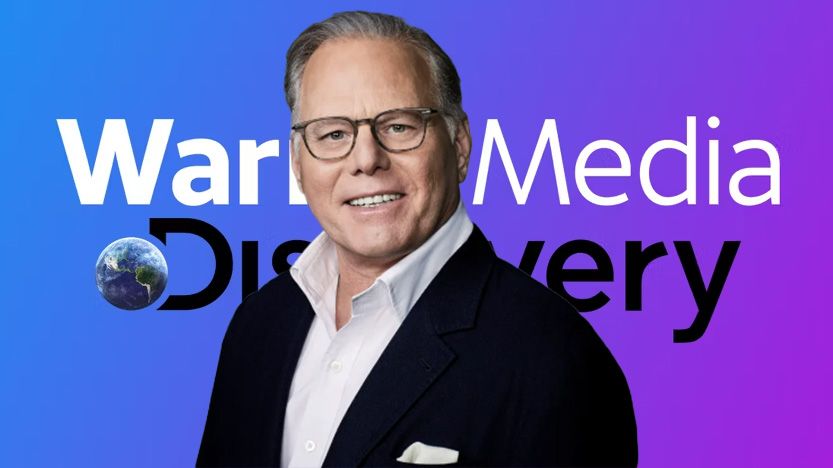Warnermedia’s situation
WarnerMedia and Discovery Inc. merged today, another monster that can stand up to Netflix and Disney. However promising this merger may be from a business strategic point of view, it will bring some very real financial problems- most notably, the huge debt mountain left over from the two companies. This paper will focus on these conditions, taking the nature of the debt into account, as well as their potential effect on the future of the combined company.
The History
May 2021 came the announcement, that the WarnerMedia-Discovery deal which was completed in April this year is one of the media sector’s largest concertations of power. The $43 billion merger marrying WarnerMedia’s vast library of content, which includes HBO, Warner Bros and CNN, to Discovery’s array of life and reality-TV brands like Discovery Channel, JHTV Animal Planet sought amalgamate offerings thus both companies could benefit.
Debt Dilemma
Warner Bros. Discovery (WBD) was greatly laden with debt at its birth. The merger had left the newly formed company with nearly $55 billion in debts. This heavy burden of debt creates many risks and challenges:
Interest Payments and Financial Strains: The need to make regular interest payments to service its debts puts WBD under a great deal of financial pressure. Heavy interest payments leave less money available for producing content, marketing, and keeping up with technological changes on which an enterprise trying to stay ahead in today’s rapidly shifting media landscape must spend some of its money. As a result of this, being left without any breathing space is always a risk even for those organisations that appear most secure at first sight in the world today.
Credit Rating: Heavy debts can tend to lower the company’s credit ratings. Lower credit ratings bring higher borrowing costs. Such a situation can only make things worse for WBD. If it gets a bad name in the world of finance, after all, the company could have difficulty getting favourable terms on future financings.
Limits of Operation: Having to pay off debts takes a toll on WBD’s operational flexibility. Strategic investments, such as acquiring fresh content or investing in new technologies, might be put off and that could stall the company’s growth prospects.
Strategic Rationale:
The strategic logic behind the merger has not vanished. With combined strength, the merged enterprise is equipped to get profits from synergies, enrich its content offerings and achieve a greater competitive edge than it would have alone. The main strategic benefits are:
Content Library and Production Ability: The merged company will integrate WarnerMedia’s Hollywood films, high-profile TV series and high-quality cable program with Discovery’s large stock of non-fiction and lifestyle entertainment. This heterogeneous program group should attract totally different classes of audiences and be a winner in streaming media markets.
Global Reach and Distribution: Through WarnerMedia’s good market position in the United States and international markets of operation, merged with Discovery’s international reach, the combined company can spread its tentacles abroad to much greater effect. This increased range makes subscriber growth conceivable and also raises the possibility of multiple income streams.
Synergies: The merger will produce significant cost synergies. Current estimates put annual savings at some $3 billion. These funds can be laid back into media production and technology creation, leaving WBD in a better position to take on rival players.
Solving the Problem of Debt
Warner Bros. Discovery need to take certain actions in order to handle its debt, they will have to adopt many aspects of approach. key components of this strategy might include:
Divestitures and Asset Sales: By selling off non-essential assets one can acquire immediate cash liquidity from which to liquidate debt. Highlighting unproductive or non-strategic holdings and getting rid of them, makes the operation-and fiscal structure— more streamlined.
Revenue Development and Profitability: Fostering revenue growth through strategic initiatives–such as broadening the subscriber base, gaining more advertising revenues and seeking new income sources–can increase profits. Higher profits can be used to cover debts and consolidate the company’s financial situation.
Cost Management: Stringently controlling costs and optimizing operational efficiency can help WBD to manage expenses and release resources for repayment of debt. This could entail consolidation of operations, consolidation of responsibilities and use technology to enhance productivity.
Capital Markets and Refinancing: By contacting the capital markets, refinance existing debt at better terms is possible. This means lower interest costs and more time for repayment. This will allow corporations to have more leeway in pursuing their strategic objectives.
Dangers and Difficulties of the Plan
Although the debt burden can be contained through the proposed strategies, the road is still fraught with many other potential risks and difficulties.
Market Competition: Competition in the streaming media market is intense, with major players signalling their confidence by their large upfront investments in new content and technology. For WBD keeping pace with these would not only catch up competitors, but also it might rack up more debt than it can handle.
Economic Uncertainty: Reductions in either economic activity or consumer confidence will throw money off track by making it harder for WBD to reach its financial targets and also possibly even damaging vintage advertising revenue streams, which flow into this profit pool from over there side of the ledger. Both forms of instability play a big role in our income situation.
Regulatory and Legal Challenges: The media industry is subject to government regulation and legal challenges, creating further hurdles for a combined company. It requires careful compliance and strategic planning from such arcane complexities as these.
Conclusion
But the debt burden of WarnerMedia is by no means easy to shrug off. As hinted at by the figures in its financial report for 2020-2021, WarnerMedia had net debt of $42 billion at the end of March 2021.
An effective approach to addressing this debt must focus on revenue growth and optimization, cost control and strategic refinancing. While the road ahead is fraught with peril, Warner Bros. Discovery has the potential to combine their expertise effectively.
Ultimately, the commercial success of this merger will depend on the new entity’s ability to strike a balance between preserving its financial health while staking out investments in content, creative invention and expansion. Managed properly, Warner Bros. Discovery could very well become the mainstream force reshaping competitively structure of this industry for years coming.



























